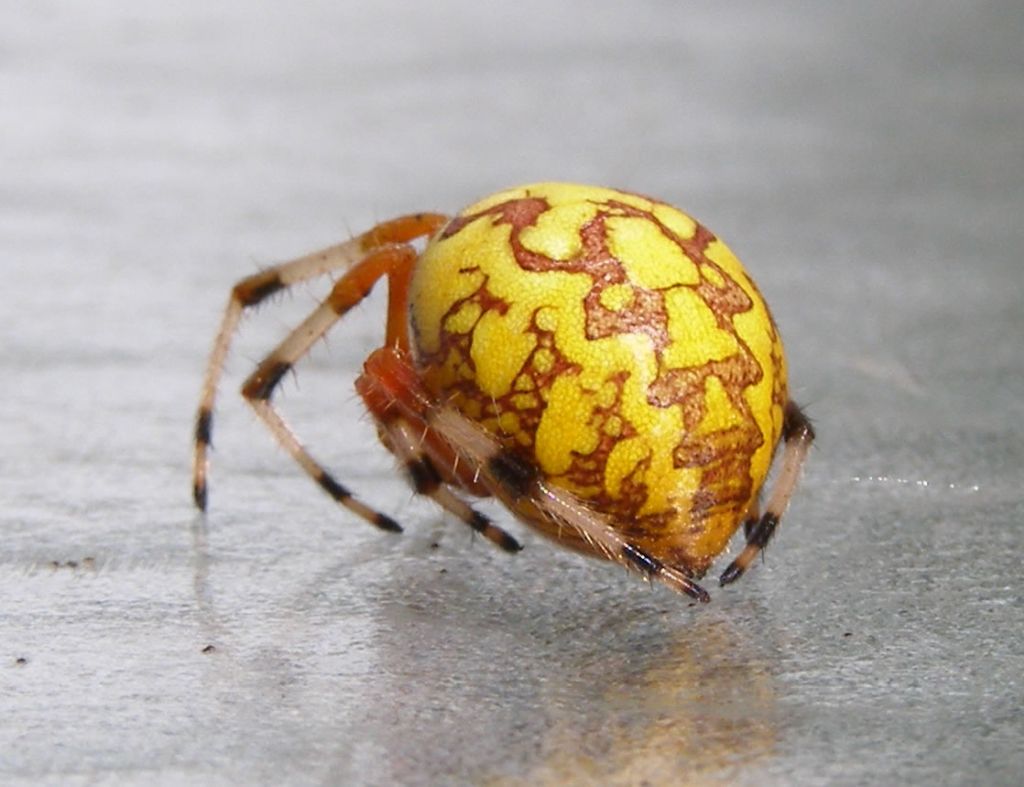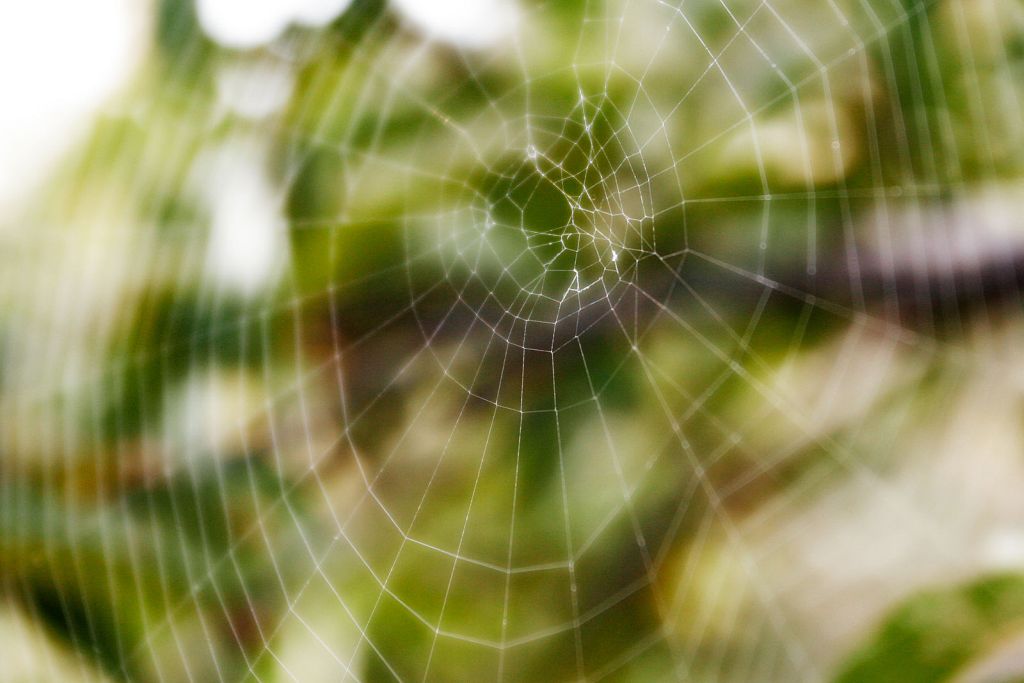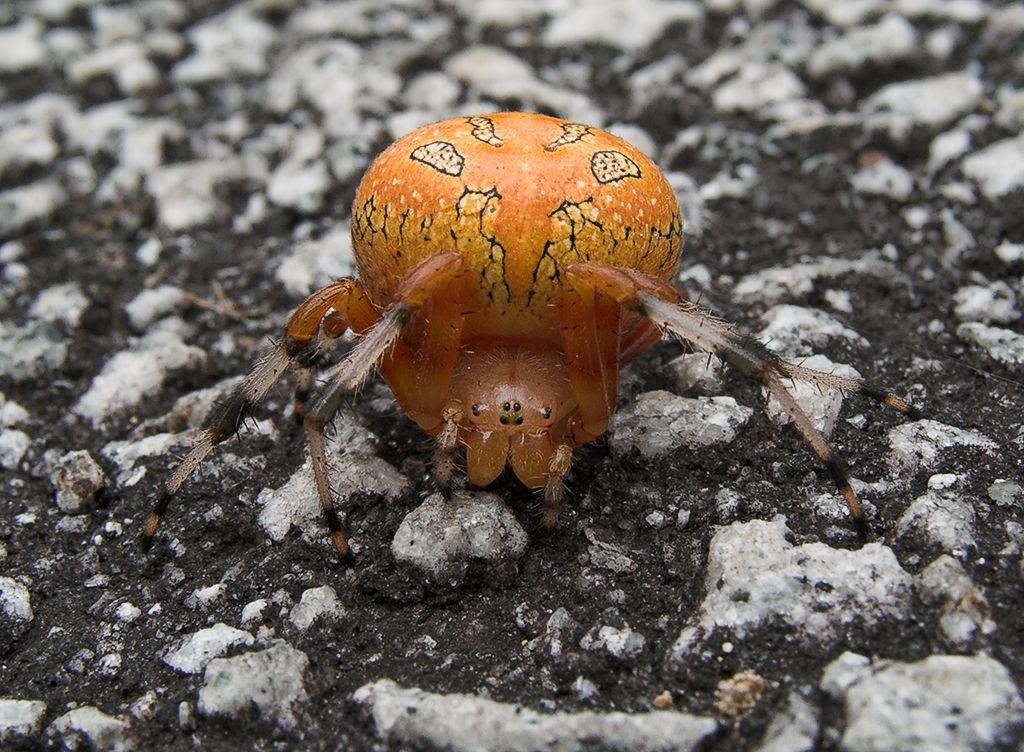
In autumn I often see round vertical spider webs without a spider in them. Perhaps they’re the webs of marbled orb weavers.

Araneus marmoreus live around the world in the northern hemisphere, building their orb-shaped webs in wooded areas, especially along stream banks. When you find the webs they’re usually empty.
If the spider was there, you’d see that it’s only 9-22 mm (.3 to .8 inches) long. Males are the typical spider shape but the females have large, round, marbled abdomens ranging in color from orange to yellow with purple markings and pale spots.
“Marbled orb weaver” describes them perfectly. They’re also called “pumpkin spiders” for obvious reasons.

I’ve rarely seen the marbled female and here’s why: After she spins her web she attaches a signal thread to the center and retreats to a hiding place where she holds the thread while she waits. The signal lets her know when something hits the web and out she comes.
Where does the spider hide? The Capital Naturalist tells us in this video.
(photos from Wikimedia Commons; click on the captions to see the originals. video by the Capital Naturalist)
If you want to see the hidden spider come out, you just throw a live bug into the web. I did this with some guys in Ohiopyle back in 1982. The flies were sluggish (for some reason) and we could catch them by hand, scoop them up and throw them into the web. We must have thrown about half a dozen flies into that web. Spider patiently wrapped each one in silk and waited for the next one. Had to be a fat spider afterwards!
We saw one near the red headed woodpecker site last Saturday
What an aptly named article for me as I have a marbled orb weaver quite literally right outside my window! She has made her home on the outside of the lower pane of my kitchen window where the top pane would slide if I were to lower it. Her hidey hole is the track in which the upper pane would slide as the opening stops partway down but I think there is still an opening that continues all the way down even though it is covered on the outside. This is not the first time that this spot has been a home for someone as last year a garter snake made its way to this spot, on a second story window no less, and surprised us with their head peeking out of the opening. After a couple days, the snake moved on, but our marbled orb weaver has been residing with us for probably a couple months now. I have yet to see her during the day, even if something gets caught in her web (wonder if the particularly exposed spot has something to do with it), but she comes out every evening when it is nearly or all dark and works on repairing her web and then positions herself in the middle of the web like other orb weavers. She’s out all night but back in her hidey hole before the sun starts to come up. She has been joined by several other marbled orb weavers, mostly tiny compared to her. I initially assumed they were all males but one grew a bit and was looking more bulbous like our girl. There was also one that was definitely female in the upper pane for a while until the night I saw our main girl make her way up to the upper pane (first and only time I saw that) and I haven’t seen the second female since. Why she tolerates these smaller spiders, male or female, which are much closer to her, I’m not sure, but there’s almost always smaller ones in one or both upper corners of the same pane. I went from having never seen one of these before to having a whole marbled orb weaver drama going on! I’ve watched her every night and have seen her grow into a grand spider about twice the size of when she arrived. She is impressive and fascinating, if not a little creepy. I certainly wouldn’t want her after me! But I love watching her outside my window. I will miss her when her time is done, which unfortunately will be soon.